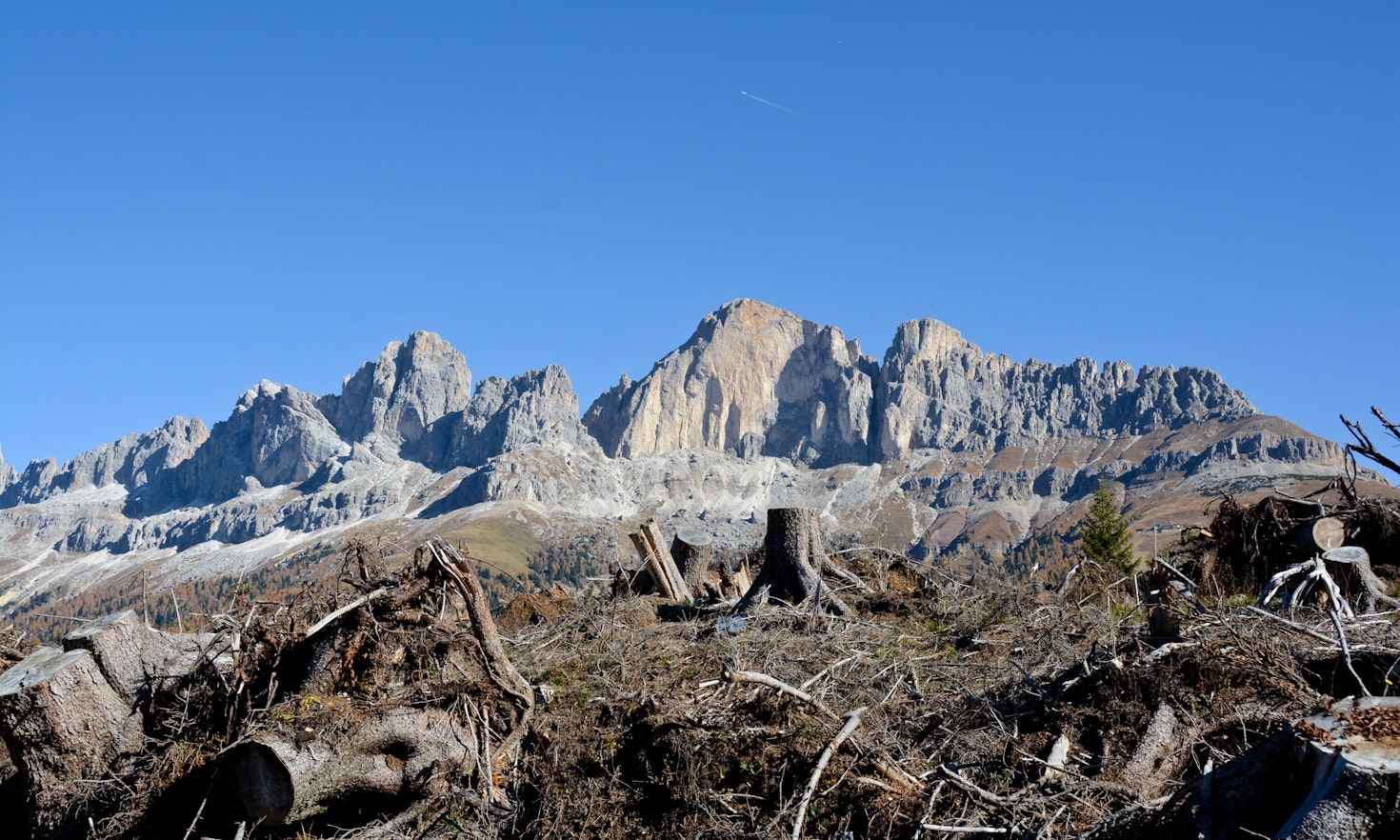Light and shadow of climate change adaptation and mitigation strategies: South Tyrol

The Eurac Research project "Climate change integration in the multilevel governance of Italy and Austria" aims at studying and comparing how the Autonomous Provinces of Bolzano/Bozen (South Tyrol) and Trento, and the two Austrian Länder Vorarlberg and Tyrol are tackling the struggle against climate change. In fact, subnational governments play an important role in the integration of climate change policies at the local and provincial level. This project is particularly well times since the recent Glasgow Climate Pact has recalled nations and governments about the urgency of addressing climate change and related negative impacts.
The Autonomous Province of Bolzano/Bozen, located in the Italian region Trentino-South Tyrol, holds a particular status within the national legal system, entrenched in its 1972 Autonomy Statute. The province has adopted its own climate policies and can directly integrate the EU legal framework in its territory for those matters that fall into its legislative powers and overlap with climate change. Because of this particular feature, the Province of Bolzano/Bozen adopted its first Climate Plan back in 2011, the plan is currently under review in order to adopt a new, more ambitious version in 2022. The Autonomous Province of Bolzano/Bozen has also adopted a Sustainability Strategy that operates in conjunction with the Climate Plan.
The Climate Plan has the objective of providing a framework for the implementation of Green House Gas (GHGs) emission reduction strategies at all sectoral levels, especially with regard to the energy sector. Indeed, the Province of Bolzano/Bozen is committed to increasing the share of energy demand covered by renewable energy sources to at least 75% by 2020 and over 90% by 2050. In order to meet this ambitious target, cooperation and coordination between different policy sectors is needed, together with the promotion of information and participation of citizens and local stakeholders in the actualization of strategic climate objectives. An important role in this sense is also played by political leaders, and by the availability of funding.
For this reason, the above-mentioned research project needed to feature a strong empirical methodology in its realization that aimed at understanding how climate change policies are integrated at the provincial level, and what the obstacles are that prevent such integration. With regard to the specific case of South Tyrol, a total of twelve interviews were conducted in order to ascertain such aspects, with a particular view to issues related to coordination among different provincial offices, participation of citizens, availability of information, the role of leadership and funding. The interviews were held with institutional and administrative stakeholders, representatives of the civil society, politicians and technical experts. The interviews involved actors from different sectors, in particular those of energy, water, spatial planning and funding, and also cross-cutting environmental experts. While a detailed analysis of the research results will be available in in a comprehensive publication, this blog post gives you an overview of some interesting points that emerged from the interviews.
The preliminary results of the interviews, which followed detailed desk research concerning political and legal documents related to South Tyrol, environment, and climate change, show that there are shared objectives between departments in the fight against climate change, such as emission reductions and the promotion of the use of sustainable resources. They also highlighted the features of South Tyrol’s climate-change strategy/sustainability strategy. Even though some obstacles were highlighted, there is a certain amount of coordination and dialogue among the different sectors of the public administration. Information exchange is a common practice of South Tyrol’s public administration, and it is realized through informal and formal practices. For example, the institutional interviewee of the spatial planning sector affirmed that the spatial planning department is participating in an informal roundtable session instituted with the Agenzia provinciale per l’ambiente e la tutela del clima (Provincial Agency for the environment and climate protection) since this agency is implementing a renewable energy sources plan in the photovoltaic sector. At the same time, there are also formal means of coordination between administrations, such as the establishment of commissions that are instituted by sectoral laws (for example, legge provinciale 17 del 2017) with regard to the evaluation of plans and projects.
However, the preliminary results of the interviews also foreshadowed some criticalities together with positive aspects in the process of participation and information of citizens. At the participation level, while all citizens and stakeholders can provide comments on the new Climate Plan, several interviewees have evidenced how participation is better taken into consideration in municipalities, rather than at broader provincial level. Secondly, regarding the availability of the access to information, the important role of the Provincial Agency for the environment and climate protection as the main source for environmental and climate change information emerged as a result of the interviews. In this respect, the newly founded civil society organization Patto per il Futuro was created also with a view to involve citizens by sharing with them a broader spectrum of information. Information and participation are strongly interrelated because only when citizens are well informed – on climate change, in this case – can they participate in the decision-making of environmental and climate plans meaningfully.
In addition, the interviews have provided some insights on the role of leadership for the integration of climate change policies at the provincial level. Generally, the main political actor for the integration of climate change policy is the provincial government (Giunta Provinciale). Its President, together with other councillors, sets the priorities for the entire legislature, which are then constantly monitored, revised and adapted, especially in the weekly meetings of the government. This is primarily where decisions are made, altogether with the legislative decision-making of the Provincial Council. Until a few years ago, climate change was the prerogative of the Green Party only - however nowadays almost all parties recognize the importance of policies for sustainability and undertake to improve the quality of the environment and people’s lives in this regard.
Finally, the dimension of funding analyzed through the interviews evidenced that public expenditure reflects the political dimension of subnational autonomy. As a matter of fact, provincial resources are distributed among the various administrative subdivisions (ripartizioni); among these, the ones with the most direct link to the fight against climate change are the Provincial Agency for the environment and climate protection and the civil protection which is responsible for dealing with catastrophic events, e.g. danger zone plans. However, there are many other administrative subdivisions and provincial agencies that in the exercise of their functions indirectly intersect the issue of climate change: Landscape planning and protection, energy, and public transports are all relevant sectors in this respect.
Climate change is a global problem that requires intersectoral – in addition to inter- and intranational - solutions and practices. This research experience has so far demonstrated that subnational governments are important actors in the fight against climate change and has also evidenced some criticalities that might be overcome in the next years through better coordination between administrations, and participation of citizens and local communities in the decision-making process.

Citation
This content is licensed under a Creative Commons Attribution 4.0 International license except for third-party materials or where otherwise noted.






